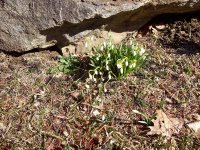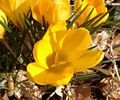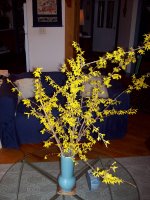Nature’s First Gold
“Nature’s first green is gold,” said Robert Frost. I had always thought he was talking about forsythia, but research suggests that he may have been talking about the willow tree and the yellowish color of its twigs before the first leaves open out. Either way, it overlooks the snowdrop. Mine were out more than ten days before the first crocus. And long before the first forsythia. We have forsythia out only because we brought branches in and forced them.
One way or another, we’re at that time of year when any signs of spring are welcome. We still have freezing temperatures most nights and the promise of a “wintry mix” on Monday. Snowdrops and crocuses don’t make much of a statement but it doesn’t take much of one to get attention in the drab and chilly days of late March..
Last fall, planning ahead, I decided to upgrade our crocus supply – and wrote about it in an October blog. I had planted 75 of them and hoped for good things this spring. If you’ve been waiting for a report, I can tell you that the first five are up – four golds and a purple. I hope there will be more.
Meanwhile, even five crocuses, a patch of snowdrops, and some forced forsythia have me thinking of spring, and no one has described its impact better than Edith Pargeter (Ellis Peters):
“Every spring is the only spring, a perpetual astonishment. It bursts upon a man every year . . . as though it had never happened before, but had just been shown by God how to do it, and tried, and found the impossible possible.”
Spring is possible, a “perpetual astonishment.” When it comes, it makes winter worthwhile and makes me pity those who live in places without it.



 Christopher L. Webber
Christopher L. Webber